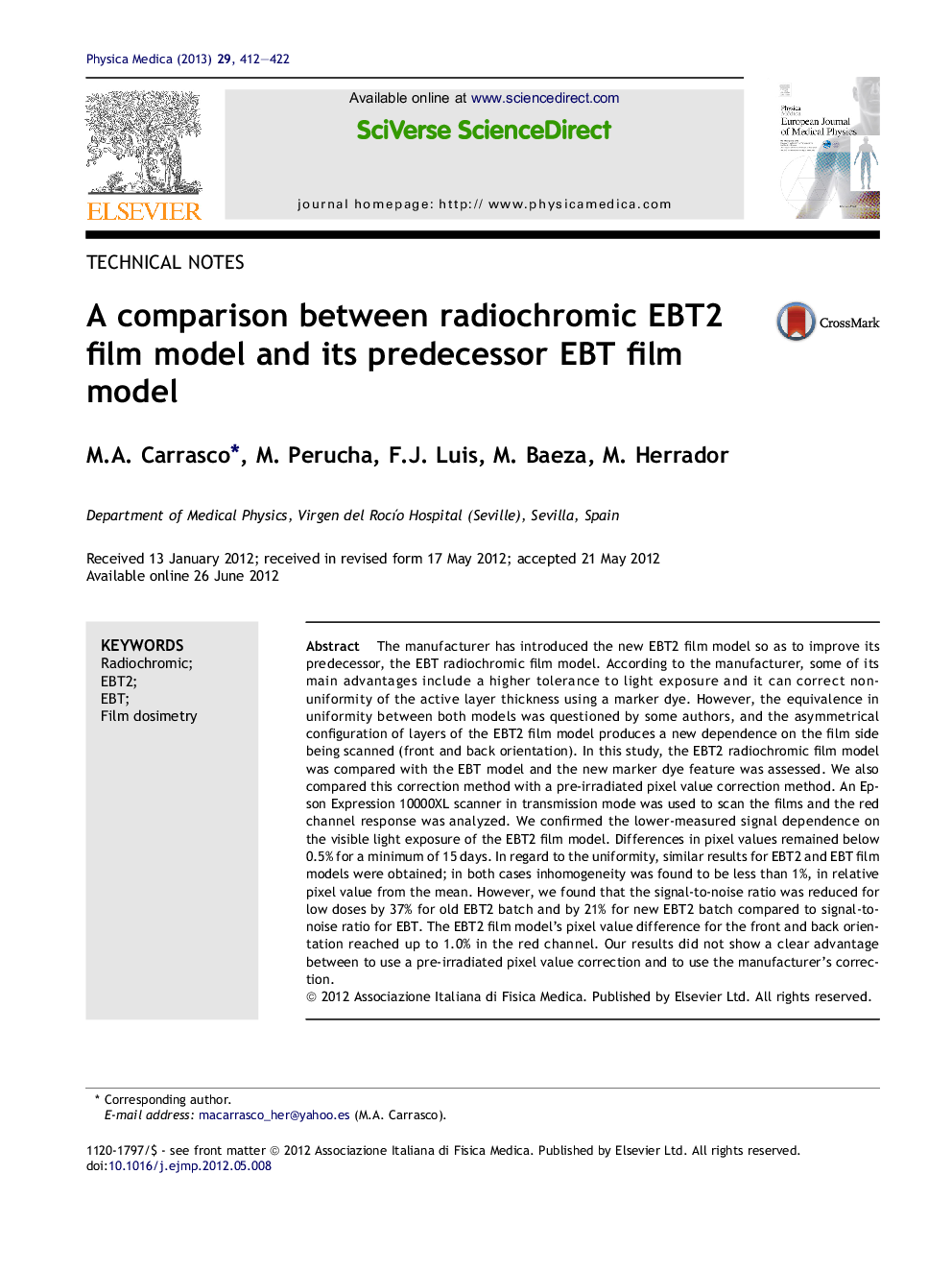| Article ID | Journal | Published Year | Pages | File Type |
|---|---|---|---|---|
| 1887634 | Physica Medica | 2013 | 11 Pages |
The manufacturer has introduced the new EBT2 film model so as to improve its predecessor, the EBT radiochromic film model. According to the manufacturer, some of its main advantages include a higher tolerance to light exposure and it can correct non-uniformity of the active layer thickness using a marker dye. However, the equivalence in uniformity between both models was questioned by some authors, and the asymmetrical configuration of layers of the EBT2 film model produces a new dependence on the film side being scanned (front and back orientation). In this study, the EBT2 radiochromic film model was compared with the EBT model and the new marker dye feature was assessed. We also compared this correction method with a pre-irradiated pixel value correction method. An Epson Expression 10000XL scanner in transmission mode was used to scan the films and the red channel response was analyzed. We confirmed the lower-measured signal dependence on the visible light exposure of the EBT2 film model. Differences in pixel values remained below 0.5% for a minimum of 15 days. In regard to the uniformity, similar results for EBT2 and EBT film models were obtained; in both cases inhomogeneity was found to be less than 1%, in relative pixel value from the mean. However, we found that the signal-to-noise ratio was reduced for low doses by 37% for old EBT2 batch and by 21% for new EBT2 batch compared to signal-to-noise ratio for EBT. The EBT2 film model's pixel value difference for the front and back orientation reached up to 1.0% in the red channel. Our results did not show a clear advantage between to use a pre-irradiated pixel value correction and to use the manufacturer's correction.
